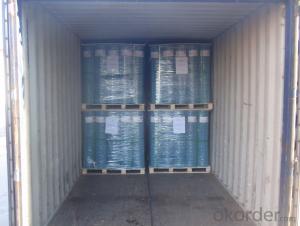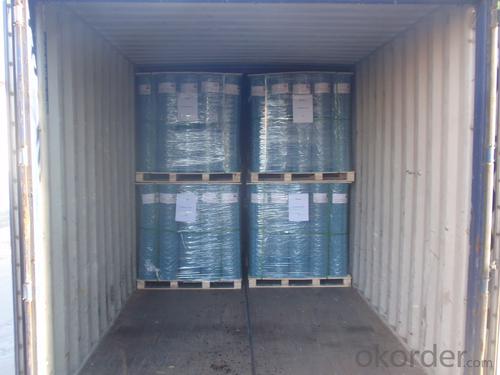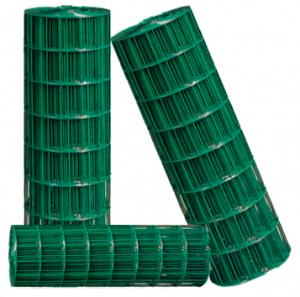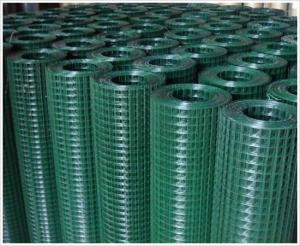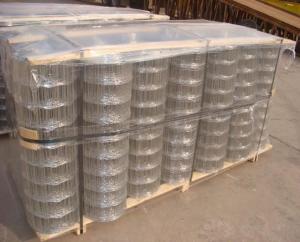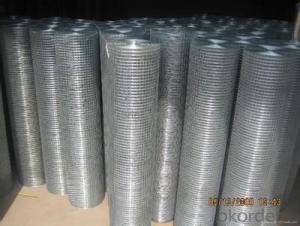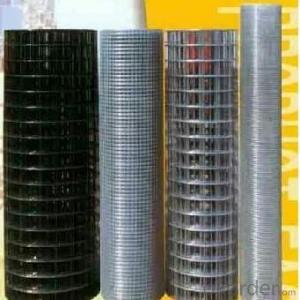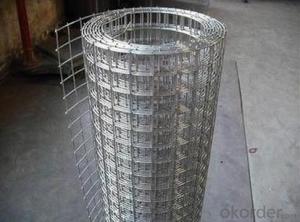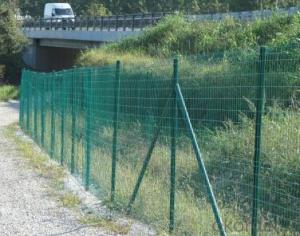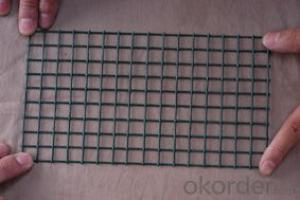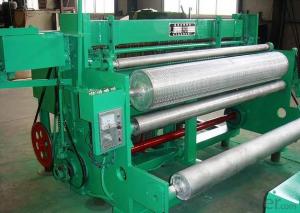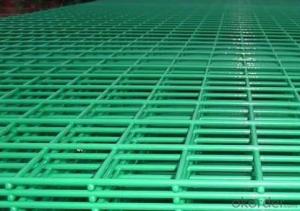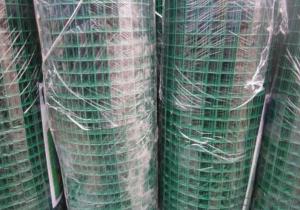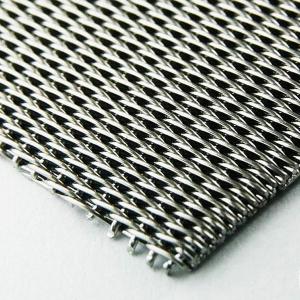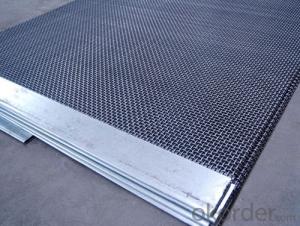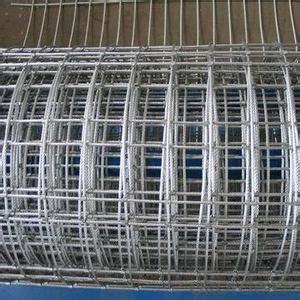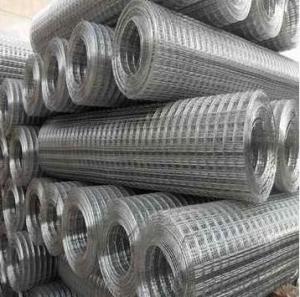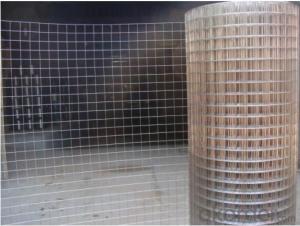PE Coated Welded Wire Mesh
- Loading Port:
- China Main Port
- Payment Terms:
- TT OR LC
- Min Order Qty:
- -
- Supply Capability:
- -
OKorder Service Pledge
OKorder Financial Service
You Might Also Like
Material: The low carbon steel , elec-galvanized steel wire, hot-dip galvanized steel wire, pvc coated wire, stainless steel wire etc.
Surface treatment: Elec-galvanized, hot-dip galvanized, pvc coated, powder coating etc.
Feature: The structure of this kind of wire mesh is strong, lasting and rust-resistant.Galvanized welded wire mesh is galvanized after welding.
Application: They are used in industry and agriculture building, transportation and mining for all such purposes as poultry houses, egg baskets, runway enclosures, draining rack, fruit drying screen, fence.
Specifications
pvc coated&galvanized welded wire mesh
1.BWG12-24
2.Smooth mesh surface
strong welded points
3.anti-corrosion
pvc coated&galvanized welded wire mesh
Material: hot-dipped galvanized iron wire then pvc coated
Color Select: light green,dark green,black,red,yellow etc.
Processing Technique
It adopts electro galvanized before, or hot-dipped galvanized before,then the pvc power go through the high temperature which are made with the automatic production line.
- Q: How is steel wire mesh used in reinforcement of industrial projects?
- Steel wire mesh is commonly used in the reinforcement of industrial projects due to its strength, durability, and versatility. It is primarily used to enhance the structural integrity and stability of concrete structures. One of the main applications of steel wire mesh in industrial projects is in the construction of reinforced concrete slabs and walls. The mesh is laid within the concrete mixture, providing additional tensile strength and preventing cracking or breaking under heavy loads. This reinforcement helps to improve the overall performance and longevity of the structure. Furthermore, steel wire mesh is often used in the construction of industrial flooring systems. By placing the mesh within the concrete floor, it helps to distribute the load evenly, reducing the potential for cracks or sagging. This is especially crucial in areas with heavy machinery or high foot traffic. In addition to its use in concrete reinforcement, steel wire mesh is also utilized in the reinforcement of tunnels, bridges, and other large-scale industrial structures. It acts as a reinforcement layer, enhancing the strength and stability of these projects, ensuring their durability and safety. Moreover, steel wire mesh is employed in industrial projects that require security and protection. It is commonly used as fencing material, providing a strong and secure barrier. The mesh's robustness and resistance to corrosion make it an ideal choice for perimeter fencing in industrial areas. Overall, steel wire mesh plays a vital role in the reinforcement of industrial projects. Its strength, durability, and versatility make it an essential component for enhancing the structural integrity and stability of concrete structures, as well as providing security and protection in various industrial applications.
- Q: Can steel wire mesh be used for mining applications?
- Yes, steel wire mesh can be used for mining applications. Steel wire mesh is commonly used in mining operations for various purposes. It can be used for safety fencing to prevent access to hazardous areas, as well as for perimeter fencing to secure mining sites. Steel wire mesh is also used for screening and sieving purposes in mining operations to separate different sizes of materials or to filter out unwanted particles. Additionally, it can be used for reinforcing underground tunnels and shafts to provide stability and prevent collapses. Due to its durability, strength, and resistance to corrosion, steel wire mesh is a reliable choice for mining applications.
- Q: How is steel wire mesh used in the automotive industry?
- Various applications in the automotive industry commonly use steel wire mesh. One primary usage is for vehicle safety. Car seats utilize it as a reinforcement material, ensuring strength and durability to protect passengers during collisions. By preventing seat collapse upon impact, the risk of severe injuries is reduced. Another important application is within airbag systems. The mesh functions as a component in the airbag module, guaranteeing proper deployment and directing inflation. It maintains the desired shape and size of the airbag, effectively safeguarding occupants during accidents. Steel wire mesh is also integral in manufacturing filters for automotive engines. These filters trap dust, dirt, and particles, ensuring clean airflow to the engine. Acting as a barrier, the mesh prevents larger debris from entering the engine, potentially causing damage. This enhances overall efficiency and vehicle performance. Furthermore, grilles and vents in the automotive industry incorporate steel wire mesh. These components protect crucial parts like radiators and engine compartments. By acting as a barrier, the mesh prevents debris from entering these areas, preventing damage or overheating. In conclusion, steel wire mesh plays a critical role in the automotive industry. Its applications in car seats, airbag systems, engine filters, and grilles contribute to the overall safety, performance, and longevity of vehicles.
- Q: Can steel wire mesh be used for creating tree guards or plant supports?
- Yes, steel wire mesh can be used for creating tree guards or plant supports. It provides a sturdy and durable solution for protecting young trees from animals or wind damage. The mesh design allows for proper airflow and sunlight penetration while providing necessary support for plant growth.
- Q: Can steel wire mesh be used for retaining soil?
- Steel wire mesh is a reliable option for soil retention. This versatile material can offer stability and strength for various applications involving soil retention. It can serve as a reinforcement layer in retaining walls, embankments, and slopes to prevent soil erosion and maintain structural integrity. Typically, the mesh is installed horizontally and firmly anchored into the ground, creating a barrier that securely holds the soil in place. The durability and strength of steel wire mesh make it suitable for withstanding the pressure exerted by the retained soil. Moreover, the mesh's open design allows for proper drainage and prevents water pressure build-up behind the structure. All in all, steel wire mesh proves to be an effective solution for retaining soil in a wide array of landscaping, construction, and civil engineering projects.
- Q: How is steel wire mesh used in reinforcement of stadiums and sports arenas?
- Steel wire mesh is an essential component in the reinforcement of stadiums and sports arenas due to its strength, durability, and versatility. It is commonly used in various applications within these structures to enhance their structural integrity and safety. One of the primary uses of steel wire mesh in stadium reinforcement is the construction of concrete slabs and walls. By embedding the mesh within the concrete, it provides additional tensile strength and prevents cracking or crumbling of the structure under heavy loads or external forces. This reinforcement ensures that the stadium or arena can withstand the weight of the spectators, equipment, and any other live loads during events. Moreover, steel wire mesh is extensively used in the creation of fencing systems around the perimeter of stadiums. These fences act as safety barriers, preventing unauthorized access to restricted areas and ensuring the protection of both spectators and the playing field. The mesh's strong and rigid nature makes it an ideal material for fencing, as it can withstand impacts from external forces while maintaining its structural integrity. In addition to concrete reinforcement and fencing, steel wire mesh is also utilized in the construction of staircases, walkways, and platforms within stadiums. These areas experience high foot traffic, and the mesh provides reinforcement to prevent any structural failures or accidents. By embedding the mesh within the concrete steps or walkways, it ensures the stability and longevity of these components, thereby ensuring the safety of the spectators. Furthermore, steel wire mesh is used in the reinforcement of roof structures in stadiums and arenas. These roofs are often large and span wide areas, requiring additional support to withstand wind loads and other environmental forces. The mesh is integrated into the roof structure to provide reinforcement and prevent any potential sagging or collapse, ensuring the safety of the spectators below. Overall, steel wire mesh plays a vital role in the reinforcement of stadiums and sports arenas. Its strength, durability, and versatility make it an ideal material for various applications such as concrete reinforcement, fencing, staircases, walkways, platforms, and roofs. By incorporating steel wire mesh into these structures, stadiums and sports arenas can ensure the safety, stability, and longevity of their facilities, providing a secure and enjoyable experience for spectators and athletes alike.
- Q: Is steel wire mesh suitable for packaging applications?
- Steel wire mesh is well-suited for packaging applications, offering numerous advantages that make it an appropriate choice. Firstly, it ensures exceptional strength and durability, effectively safeguarding the packaged items during transportation and handling. The resilient nature of steel wire mesh makes it resistant to tears, punctures, and abrasions, minimizing the risk of damage to the goods. Moreover, steel wire mesh allows for proper ventilation and visibility, which is especially crucial for certain products that require airflow or easy identification. The mesh's open design facilitates the circulation of air, preventing moisture build-up and maintaining the freshness of perishable items. Additionally, the transparency of the mesh allows for effortless identification and inspection of the packaged goods without the need for unwrapping or opening. Furthermore, steel wire mesh is both reusable and recyclable, making it an environmentally friendly packaging option. Its durability and longevity enable multiple reuses, reducing the need for frequent replacement. Additionally, once it reaches the end of its life cycle, steel wire mesh can be easily recycled, contributing to waste reduction and sustainability efforts. In summary, steel wire mesh proves to be a suitable packaging material due to its strength, durability, ventilation, visibility, and environmental benefits. It provides a practical solution for protecting and transporting a variety of products, making it a preferred choice for many packaging requirements.
- Q: How does the coating affect the resistance of steel wire mesh to chemicals?
- The resistance of steel wire mesh to chemicals greatly depends on the coating applied. The coating functions as a protective layer, preventing direct contact between the mesh and corrosive substances, thus reducing the chance of chemical reactions. Various coatings offer different levels of chemical resistance. For example, a polyvinyl chloride (PVC) coating exhibits excellent resistance to acids, alkalis, and other corrosive chemicals. Conversely, an epoxy coating provides high resistance to solvents, oils, and hydrocarbons. The thickness and quality of the coating also influence the mesh's resistance to chemicals. Thicker coatings offer better protection by creating a more substantial barrier between the wire and corrosive substances. Additionally, high-quality coatings are designed to withstand prolonged exposure to chemicals without deteriorating or easily wearing off. When selecting the appropriate coating, it is crucial to consider the specific chemicals the mesh will encounter in its intended application. This ensures compatibility between the coating and the chemicals, maximizing the mesh's resistance to chemical corrosion. In conclusion, the coating applied to steel wire mesh plays a vital role in its chemical resistance. The type, thickness, and quality of the coating determine the level of protection, emphasizing the importance of choosing a suitable coating for the intended chemical environment.
- Q: Is steel wire mesh fire-resistant?
- Generally, steel wire mesh is acknowledged as being fire-resistant. The reason for this is that steel possesses a high melting point and does not easily ignite or combust. Steel wire mesh is widely utilized in various contexts that necessitate fire resistance, such as in construction, industrial environments, and fencing. It is capable of enduring high temperatures and is frequently employed as a protective barricade to hinder the propagation of fire or to confine flames. Nevertheless, it is crucial to take into consideration that the extent of fire resistance may differ depending on the specific kind and thickness of the steel wire mesh. It is always advisable to consult manufacturers or experts in the industry to ensure that the steel wire mesh satisfies the required fire resistance standards for a specific application.
- Q: Can steel wire mesh be used for reinforcement in walls?
- Indeed, walls can be reinforced using steel wire mesh. This material is frequently utilized to bolster walls, enhancing their robustness and stability. It is commonly combined with concrete, resulting in reinforced concrete walls. Throughout the construction process, the steel wire mesh is incorporated into the wall, preventing cracks and enhancing the wall's overall structural integrity. Furthermore, steel wire mesh is adaptable and suitable for various wall reinforcement purposes, including retaining walls and masonry reinforcement. All in all, steel wire mesh is a versatile and efficient material for reinforcing walls.
Send your message to us
PE Coated Welded Wire Mesh
- Loading Port:
- China Main Port
- Payment Terms:
- TT OR LC
- Min Order Qty:
- -
- Supply Capability:
- -
OKorder Service Pledge
OKorder Financial Service
Similar products
Hot products
Hot Searches
Related keywords
